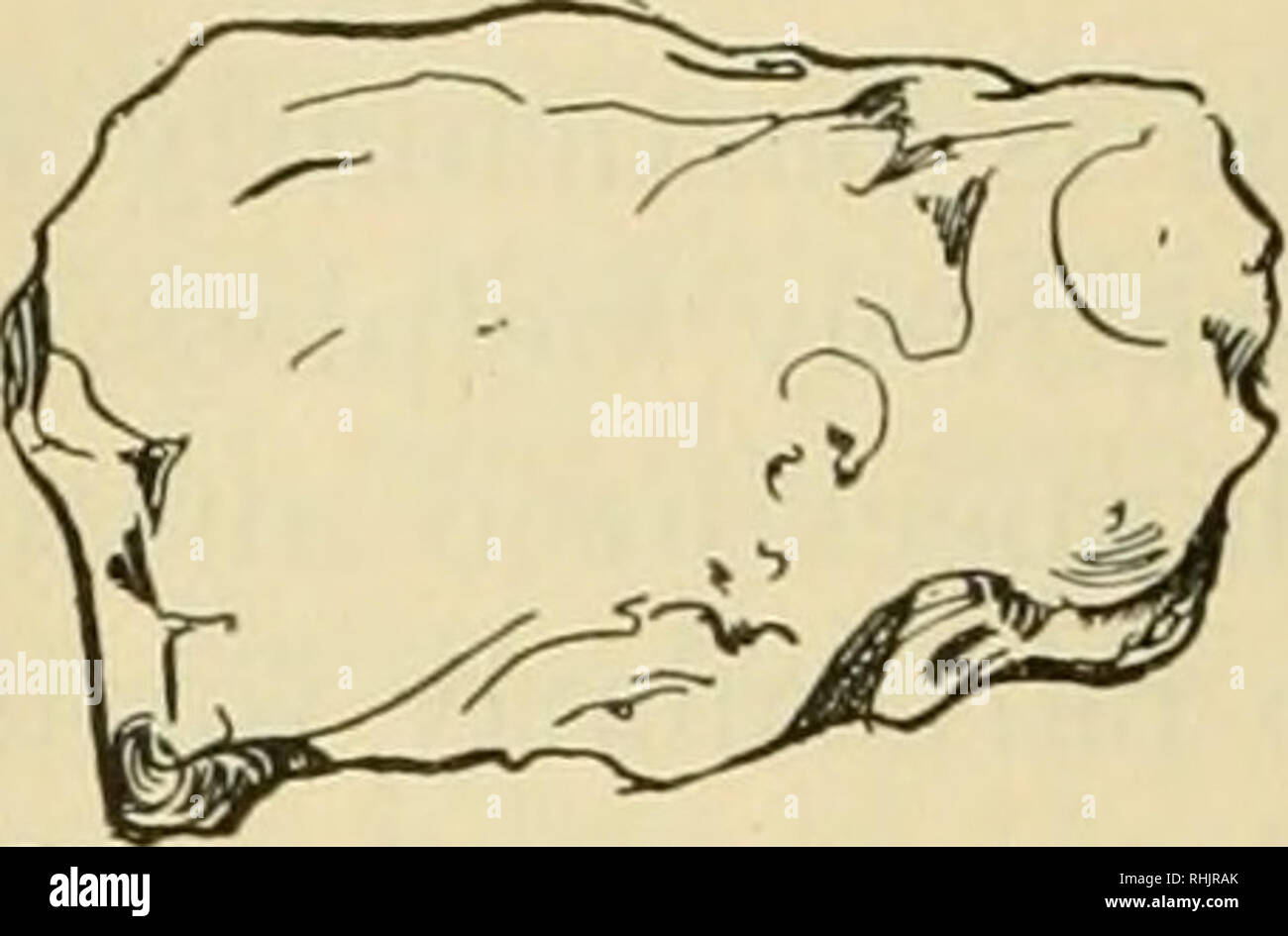. Biology; the story of living things. E0LITH6. Eolithic implements are somewhat uncertain in character, although very stimulating to the imagination. They are "handy" stones, sometimes rudely chipped without any definite design, except that they fit the hand and some- times show evidence of having been used. Whether they ever did fit into a calloused prehistoric human hand is problematical. Doubtless the first tools and weapons were not made but were found and picked up, already sufficiently fashioned by such natural forces as frost and erosion. It was not until later that flints we

Image details
Contributor:
Library Book Collection / Alamy Stock PhotoImage ID:
RHJRAKFile size:
7.1 MB (155.5 KB Compressed download)Releases:
Model - no | Property - noDo I need a release?Dimensions:
1949 x 1282 px | 33 x 21.7 cm | 13 x 8.5 inches | 150dpiMore information:
This image is a public domain image, which means either that copyright has expired in the image or the copyright holder has waived their copyright. Alamy charges you a fee for access to the high resolution copy of the image.
This image could have imperfections as it’s either historical or reportage.
. Biology; the story of living things. E0LITH6. Eolithic implements are somewhat uncertain in character, although very stimulating to the imagination. They are "handy" stones, sometimes rudely chipped without any definite design, except that they fit the hand and some- times show evidence of having been used. Whether they ever did fit into a calloused prehistoric human hand is problematical. Doubtless the first tools and weapons were not made but were found and picked up, already sufficiently fashioned by such natural forces as frost and erosion. It was not until later that flints were made over by himian agency into shapes for a definite purpose. PaleoUths show unmistaka- ble evidences of having been fashioned by man. The earliest ones are of very crude workmanship, perhaps roughly sharpened at one end, or chipped on one side only. Tools of more im- proved workmanship fol- lowed — stone axes, cleavers, scrapers, punches, spear and arrow heads, and flakes with notched sawlike margins or sharp knifelike edges. Some of these show a very remark- able degree of skill in their manufacture. The joy that a modern boy experiences in the possession of his first jack-knife is a possible echo of the delight which our cave-dwelling ancestors felt when they succeeded in splitting off a knife-blade flake from a core of flint. The paleolithic toolmakers worked for many thousands of years, as evidenced by the associated remains of extinct animals, before they. Please note that these images are extracted from scanned page images that may have been digitally enhanced for readability - coloration and appearance of these illustrations may not perfectly resemble the original work.. Hunter, George W. (George William), 1873-1948; Walter, Herbert Eugene, b. 1867; Hunter, George W. (George William), 1902-. New York, Cincinnati [etc. ] American book company